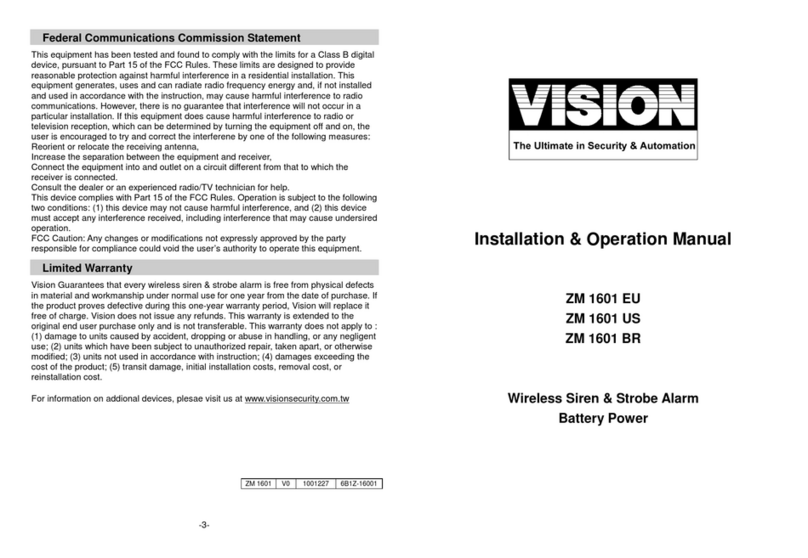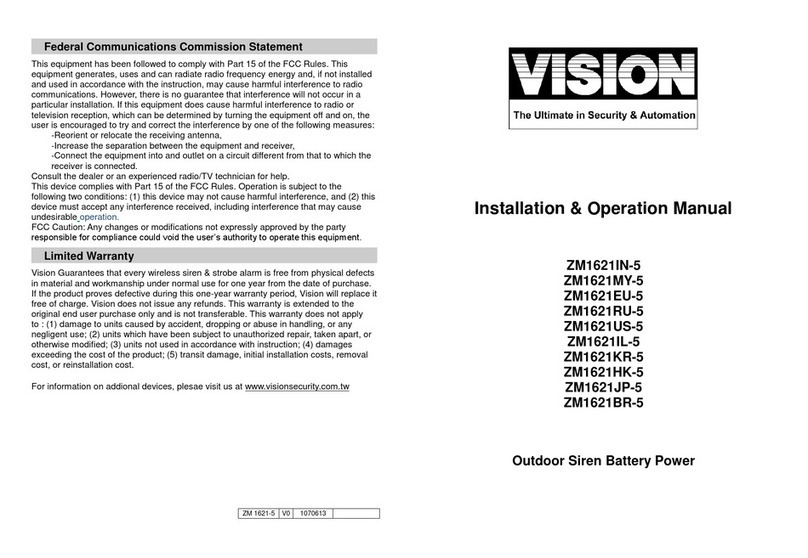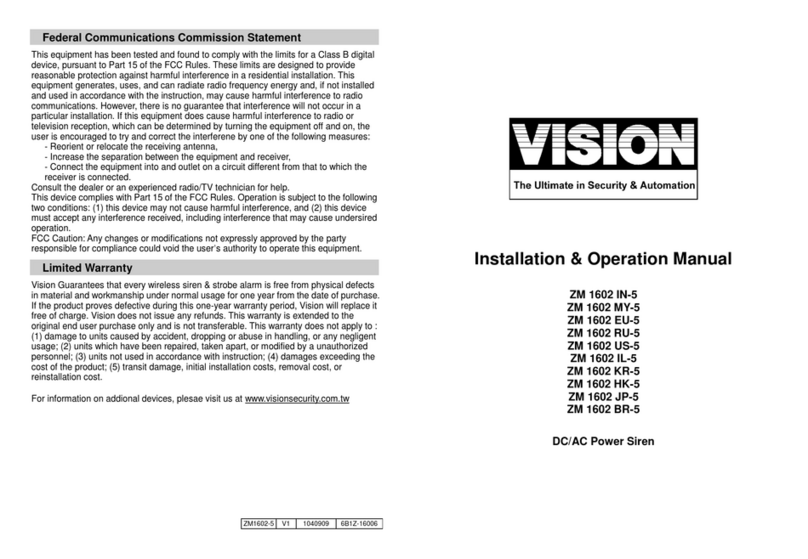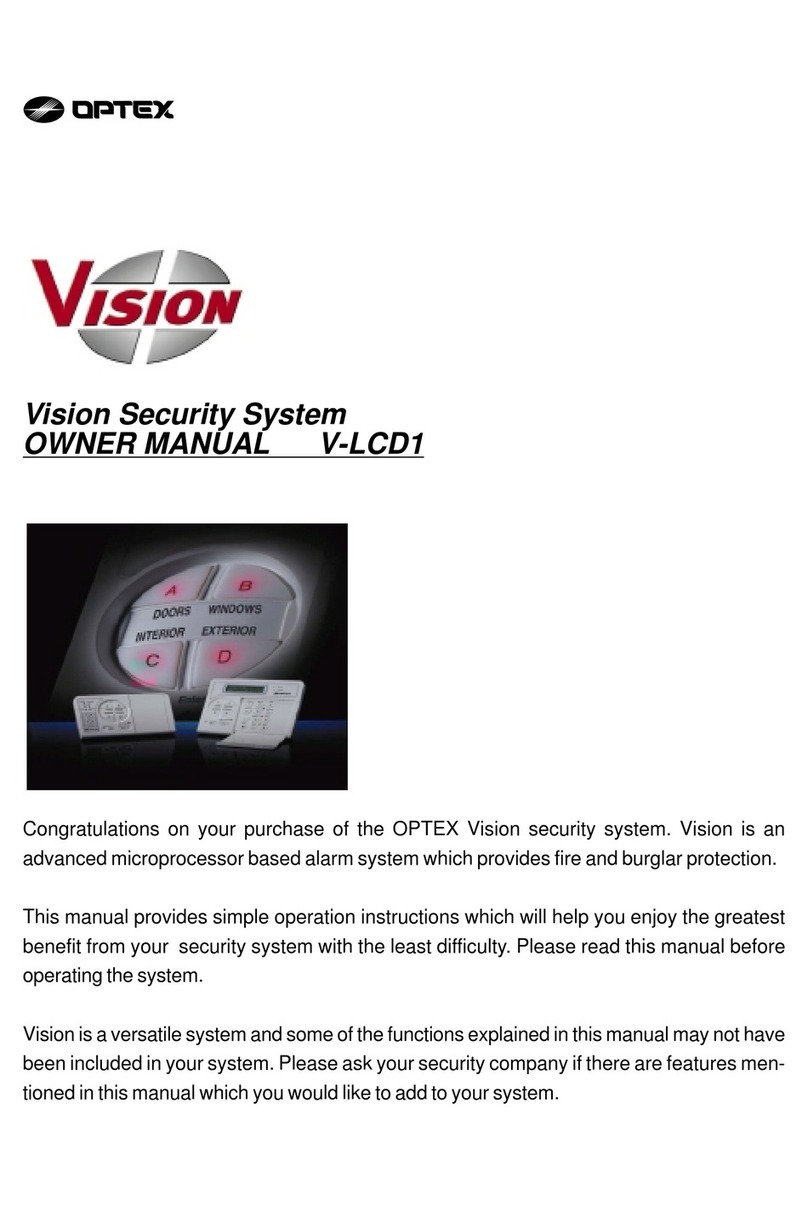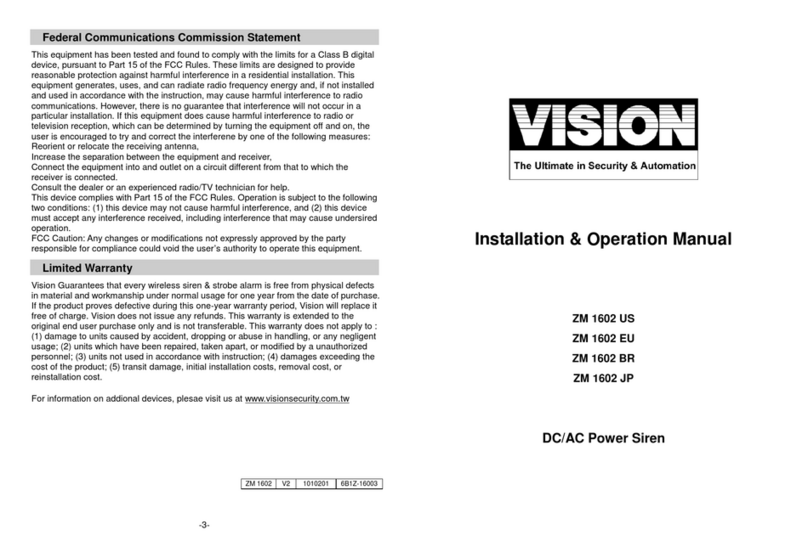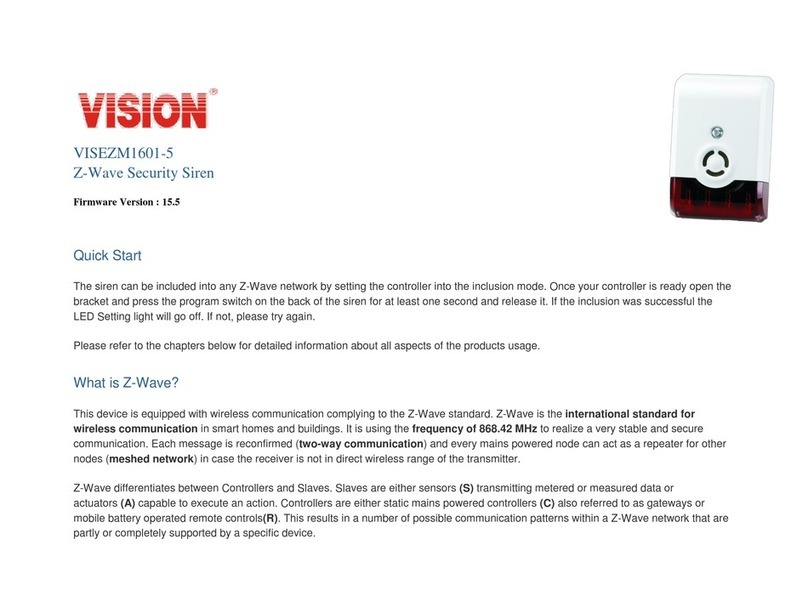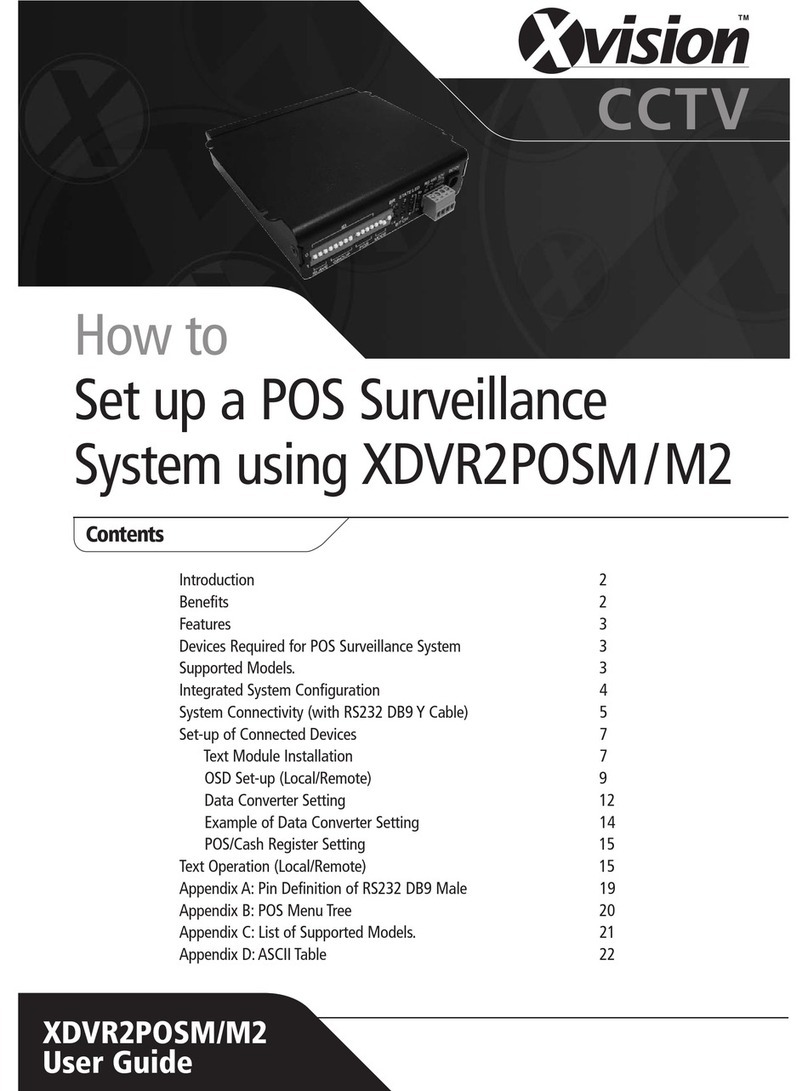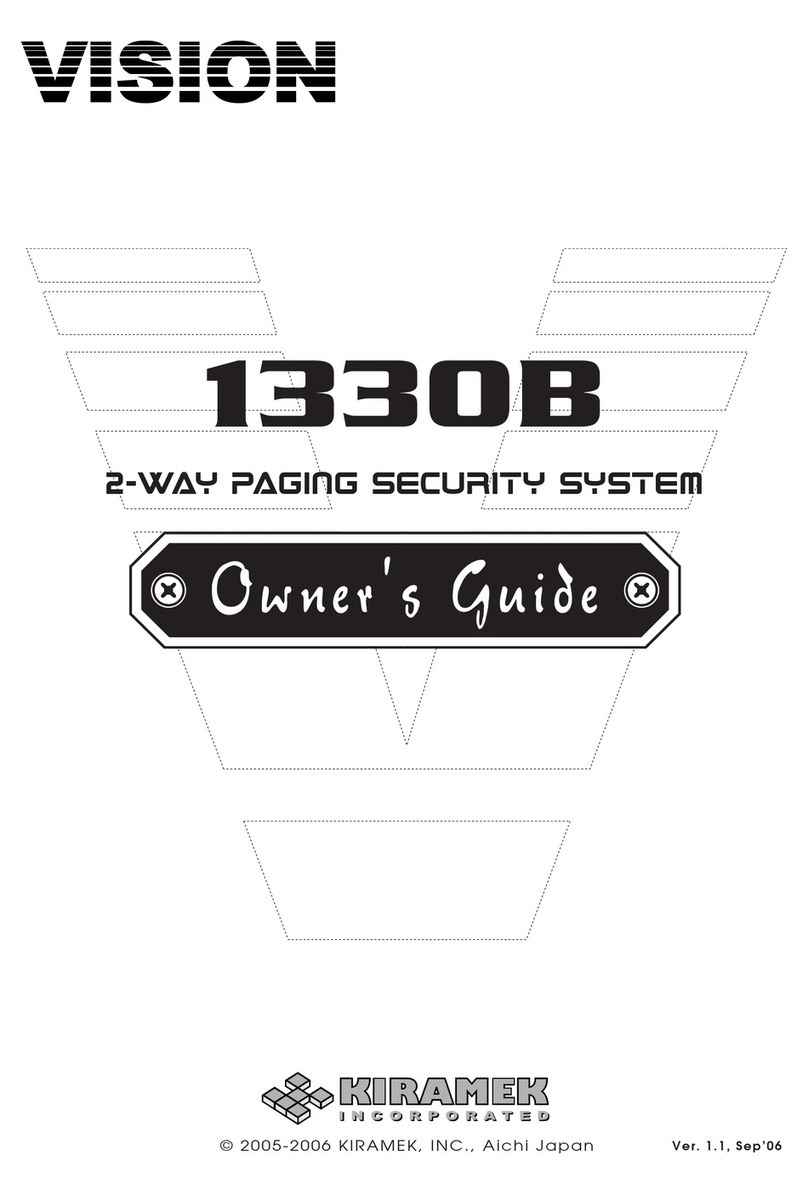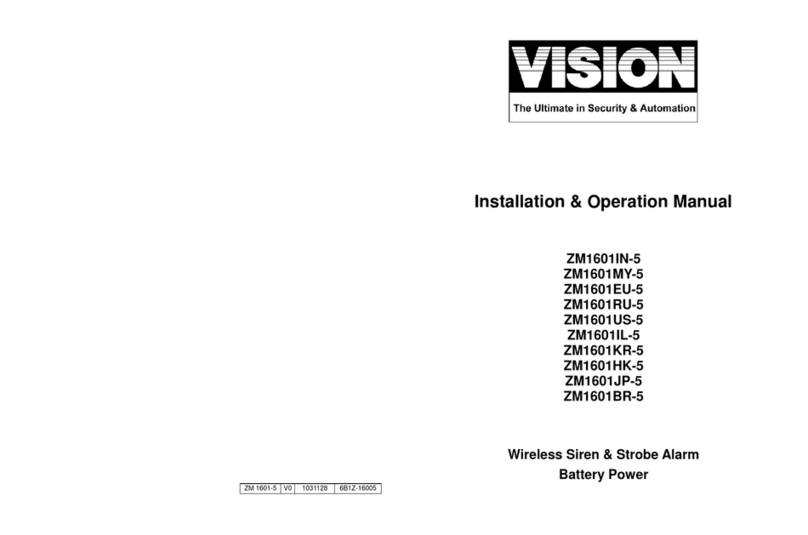1
© 2007 KIRAMEK, INC.
The VISION 2310B system control module is backed by a limited life-
time warranty against defective components and/or improper product
assembly to the original purchaser for as long the vehicle is owned by
that same purchaser, contingent upon installation by an Authorized VI-
SION Dealer. All product warranties become void if the VISION 2310B
system was not sold and installed by an Authorized VISION Dealer or
the system is moved to another vehicle. All other parts and/or accesso-
ries that connect to VISION 2310B systems, including the shock sensor
and status LED, are warranted for one (1) year from the original date
of purchase.
During the warranty period, Kiramek Inc. will repair or replace, at its
sole discretion, any system component that is found defective in mate-
rial or assembly during the warranty period, provided that the product
is returned to Kiramek Inc. by an Authorized VISION Dealer and is ac-
companied by a clear and legible copy of the original purchaser’s receipt.
Any damage to your VISION 2310B system that results from normal
wear-and-tear, accidents, improper use, neglect, faulty wiring, incorrect
installation, modication, removal or defacement of the product serial
number, alteration or repair outside Kiramek Inc or its Authorized VI-
SION Dealers immediately voids this warranty.
This warranty is limited to defective parts only and does not provide
any compensation whatsoever for damages associated with the VISION
2310B system or its accessories. This warranty does not cover instal-
lation labor, product removal and/or reinstallation fees. This warranty
is valid for the original purchaser only and may not be transferred to
another party. Kiramek Inc makes no warranty against theft or vandal-
ism of the vehicle in which the VISION 2310B system was installed.
This warranty shall not be interpreted as an insurance policy against
loss, nor shall Kiramek Inc be liable any in way for such loss, nancial
or otherwise.
WARNING! DO NOT ATTEMPT TO INSTALL THIS VISION 2310B VISION PROD-
UCT YOURSELF BECAUSE SUCH WILL IMMEDIATELY VOID THE WARRANTY.
THIS SECURITY SYSTEM MUST BE PROFESSIONALLY INSTALLED BY YOUR AU-
THORIZED VISION DEALER TO VALIDATE YOUR WARRANTY.
Limited Lifetime Warranty
